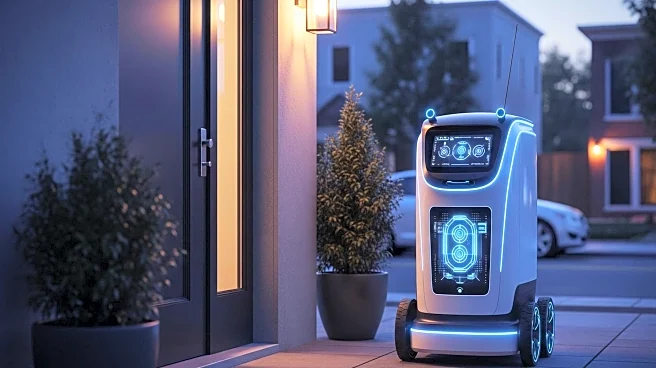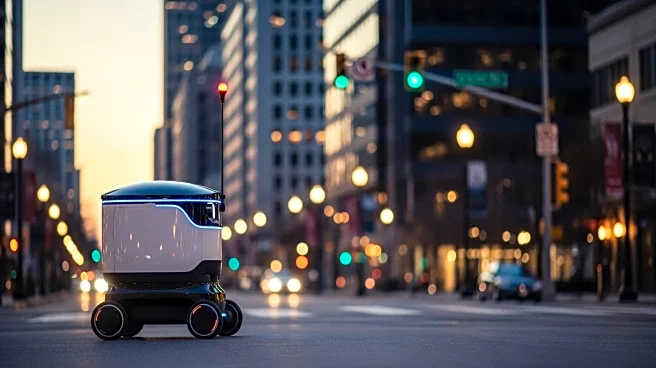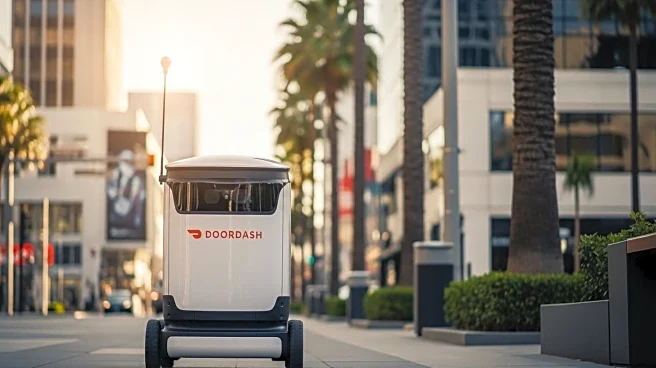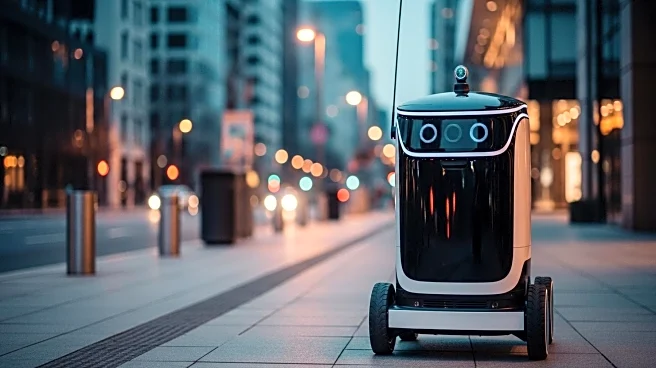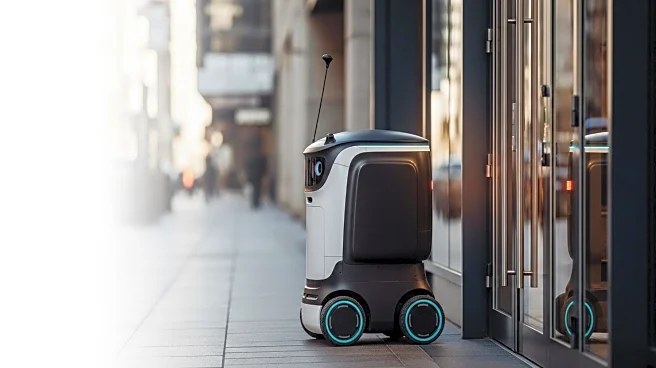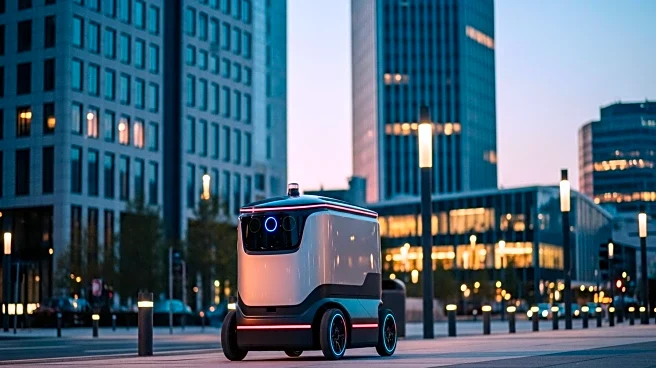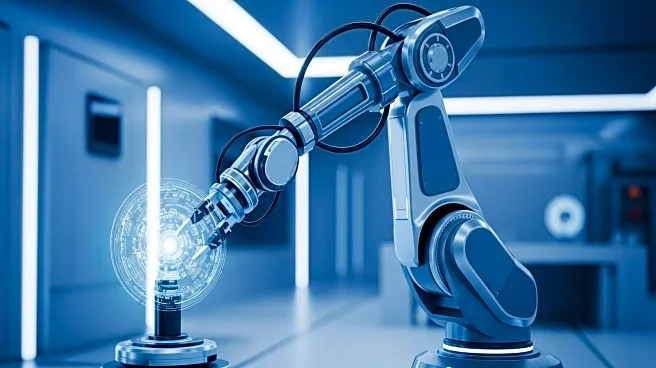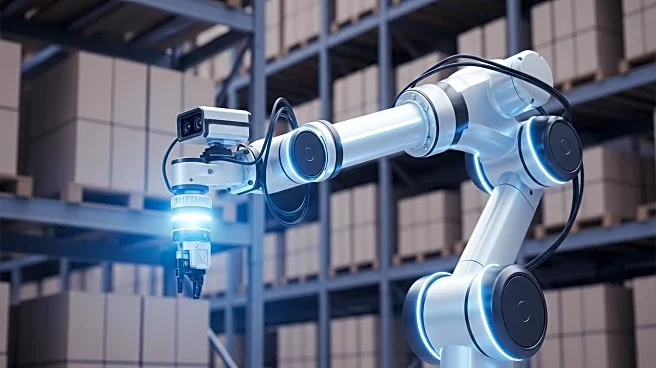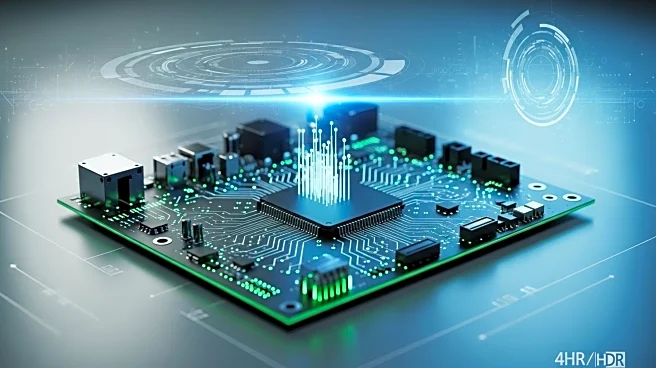What's Happening?
DoorDash has announced a multi-year partnership with Serve Robotics to utilize autonomous sidewalk delivery robots across the United States. This collaboration aims to enhance DoorDash's delivery capabilities by integrating advanced robotic technology alongside its human couriers. Serve Robotics' robots will initially be deployed in Los Angeles, marking the beginning of a nationwide rollout. This partnership is part of DoorDash's broader strategy to develop a multimodal logistics platform that includes Dashers, autonomous robots, and drones. Additionally, DoorDash has introduced its own delivery robot, Dot, which is capable of operating on roads, bike lanes, and sidewalks at speeds up to 20 miles per hour. Dot is currently being deployed in the Phoenix area, offering a unique solution for suburban deliveries within a range of three to five miles.
Why It's Important?
The partnership between DoorDash and Serve Robotics signifies a significant shift in the delivery industry towards automation and technological integration. By incorporating autonomous robots, DoorDash aims to increase efficiency and reduce delivery times, potentially leading to higher customer satisfaction and increased market share. This move also reflects a growing trend among delivery companies to explore innovative solutions to meet the demands of a rapidly expanding customer base. The introduction of Dot, DoorDash's proprietary delivery robot, highlights the company's commitment to investing in technology to address logistical challenges, such as the 'last 10 feet' delivery problem. This development could set a precedent for other companies in the industry, encouraging further investment in autonomous delivery solutions.
What's Next?
DoorDash plans to scale the production of its Dot delivery robot, although specific details have not been disclosed. As the partnership with Serve Robotics progresses, DoorDash will likely expand the deployment of autonomous robots to other major cities across the U.S. This expansion could lead to increased competition among delivery services, prompting other companies to adopt similar technologies. Stakeholders, including merchants and consumers, may experience changes in delivery dynamics, with potential improvements in speed and reliability. DoorDash's focus on reserving human couriers for more complex deliveries suggests a strategic approach to balancing automation with human labor, which could influence labor market trends in the delivery sector.
Beyond the Headlines
The integration of autonomous delivery robots raises ethical and legal considerations, particularly regarding safety and employment. As robots become more prevalent in urban and suburban environments, regulatory frameworks may need to adapt to address potential risks and ensure public safety. Additionally, the shift towards automation could impact employment opportunities for human couriers, necessitating discussions on workforce adaptation and retraining. The cultural acceptance of robotic deliveries may also evolve, influencing consumer behavior and expectations in the long term.

